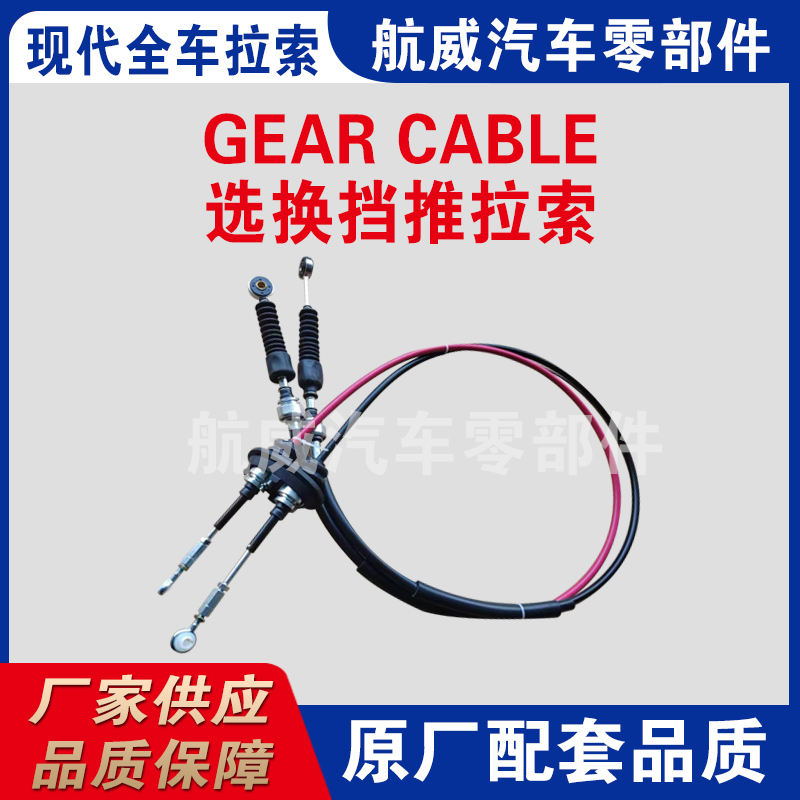throttle cable linkage
Understanding Throttle Cable Linkage The Heart of Engine Performance
Throttle cable linkage is a crucial component in the functioning of internal combustion engines, playing a vital role in controlling an engine's power output and overall performance. Essentially, the throttle cable serves as the connection between the accelerator pedal and the throttle body of the engine, allowing drivers to regulate speed and acceleration seamlessly. Understanding its design, functionality, and common issues can enhance your knowledge of automotive systems and lead to better vehicle maintenance.
What is Throttle Cable Linkage?
The throttle cable is a flexible cable that runs from the accelerator pedal to the throttle body, a component that regulates the airflow into the engine. When a driver presses down on the accelerator pedal, the cable is pulled, which in turn opens the throttle valve, allowing more air to enter the engine. This increased airflow results in a proportional increase in the amount of fuel injected into the cylinders, thereby raising the engine’s RPM (revolutions per minute) and increasing power output.
There are generally two types of throttle mechanisms in modern vehicles mechanical and electronic. However, the traditional mechanical throttle cable linkage, while becoming less common due to the rise of electronic throttle control (ETC) systems, still plays a significant role in many vehicles, especially older models.
Components of Throttle Cable Linkage
1. Throttle Cable The primary component, typically made from strong yet flexible materials, is designed to withstand the tension and motion involved during operation. 2. Throttle Body This part houses the throttle valve that opens and closes to control airflow into the engine.
3. Accelerator Pedal The driver interacts with this component to control engine speed. Pressing it down tightens the cable, while releasing it reduces tension.
4. Cable Housing This encases the throttle cable, providing protection from environmental factors while ensuring smooth operation.
throttle cable linkage

Each of these components works in unison to provide the driver with a responsive acceleration experience, making the throttle cable linkage an integral part of engine performance
.Importance of Throttle Cable Linkage
A well-functioning throttle cable linkage is essential for optimal engine performance and driver control. An efficient system allows for smooth acceleration and deceleration, while a malfunctioning linkage can lead to a host of problems
- Poor Acceleration If the cable is frayed or damaged, it may not pull the throttle valve fully open, leading to poor engine responsiveness. - Sticking Throttle Dirt and grime can accumulate within the cable housing, causing the throttle to stick and leading to unpredictable vehicle behavior.
- Increased Wear A poorly maintained cable can lead to excessive wear on the throttle body and related components, resulting in costly repairs.
Maintenance and Troubleshooting
Regular inspection of the throttle cable linkage can prevent many issues. Look for signs of fraying or damage and ensure that the cable moves freely within its housing. Lubrication may be required for older vehicles to ensure smooth operation. If you experience issues such as unresponsive acceleration or a sticking pedal, consult a mechanic for a thorough check-up.
In summary, throttle cable linkage is an essential aspect of vehicle performance that often goes unnoticed until problems arise. Understanding its components and functions not only empowers vehicle owners to maintain their cars effectively but also fosters a greater appreciation for the intricate systems that work together to deliver a smooth driving experience. Whether you're an automotive enthusiast or a casual driver, knowledge of throttle cable linkage can significantly enhance your driving and vehicle maintenance experience.
-
Workings of Clutch Pipe and Hose SystemsNewsJun.04,2025
-
The Inner Workings of Hand Brake Cable SystemsNewsJun.04,2025
-
The Secrets of Throttle and Accelerator CablesNewsJun.04,2025
-
The Hidden Lifeline of Your Transmission Gear Shift CablesNewsJun.04,2025
-
Demystifying Gear Cables and Shift LinkagesNewsJun.04,2025
-
Decoding Clutch Line Systems A Comprehensive GuideNewsJun.04,2025
